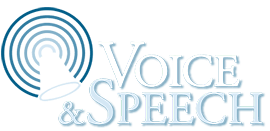Transcript
I often get questions starting with these words, “What’s the best exercise for…” fill in the blank. What’s the best exercise for a deeper voice? What’s the best exercise for better projection? What’s the best exercise for speaking clearly? And so on.
I feel badly trying to answer such questions because there’s no way to give them what they want. You can probably guess why. There’s no such thing as one exercise that will produce that kind of result.
Think about it. No baseball player would ask, “What’s the best exercise for hitting home runs,” or, “What’s the best exercise for catching fly balls?” You instinctively know it’s more complicated than that. No athlete, no musician, does just one exercise. Their performance is the outcome of many exercises.
I think this simplistic expectation stems from a wrong perception of what exercises do. Exercises don’t produce results; exercises develop and reinforce skill. You need a whole range of exercises to develop the range of skills necessary for optimal performance. Exercises are more like building materials. They’re not like pop-up tents.
A speaking voice that’s strong, clear, rich and expressive is the product of many skills working in complex coordination. All these skills need to be developed and working together to produce the desired outcome. In fact, there are many possible exercises you could do to develop each skill, and each exercise has its strengths and benefits. There’s no such thing as one best exercise, though coaches might have their favorites.
Improving any aspect of your speaking voice demands attention to three elements: relaxation, breathing and resonance. All three are essential. Furthermore, there isn’t one exercise that can make you relaxed, or one exercise to teach you to breathe. In my basic training, there might be ten exercises for each of those three elements—and that’s the simple version of the program.
I know experts tend to make things seem complicated, maybe more complicated than they need to be, but it’s also true that beginners want to oversimplify. A good teacher needs to simplify the approach so the student isn’t overwhelmed, but a good student needs realize that reaching their goals might involve more than learning one or two exercises they can do in their car.
If you want to improve your speaking voice in a noticeable and lasting way, don’t waste your time looking for one exercise. Common sense tells you that developing a clear, confident and credible speaking voice requires an approach that’s well informed and covers the essentials. Designing your program with that kind of perspective and realism will only enhance your chances of success.
For some of my favorite exercises to help you enhance your speaking voice, click the link in the description box and enroll in the free video mini course, The Sound of Success.
Voice Training: What’s the Best Exercise
People who want to improve their speaking voice will often ask, “What’s the best exercise for _____?” That’s a difficult question to answer since speaking well requires many different skills working in complex coordination. If you want to improve your speaking voice in a noticeable way, be prepared to develop a range of skills required to get the desired result. That takes more than one special exercise.


